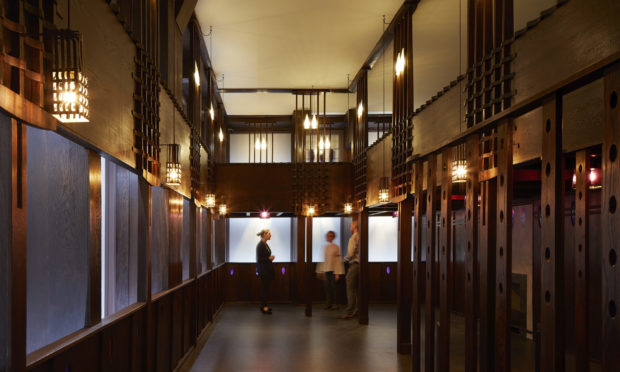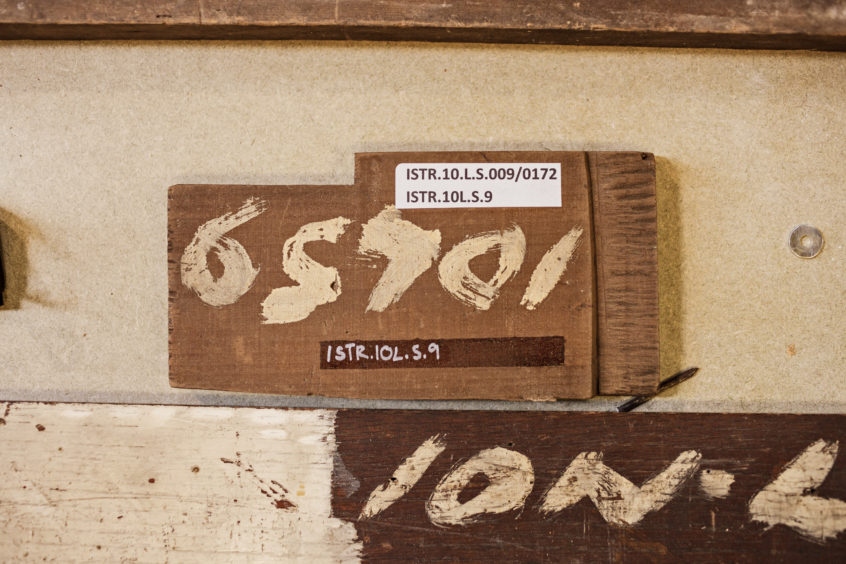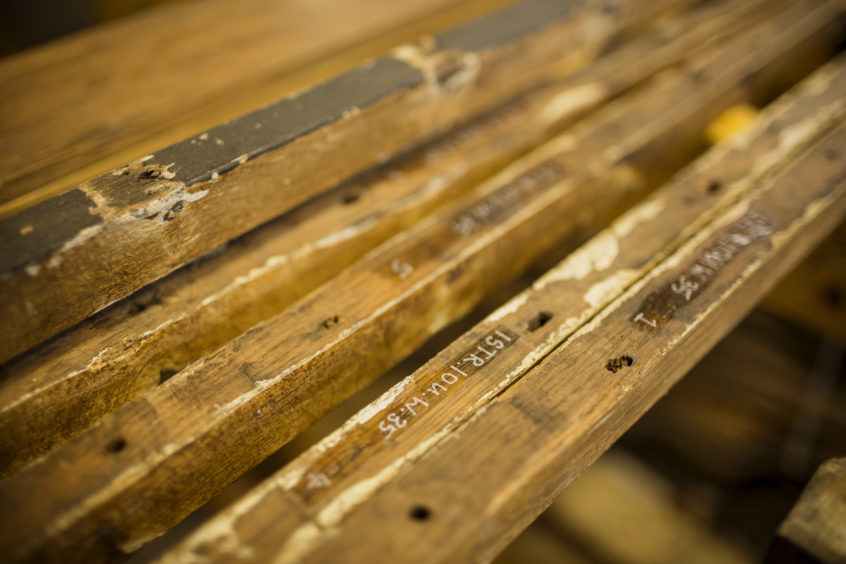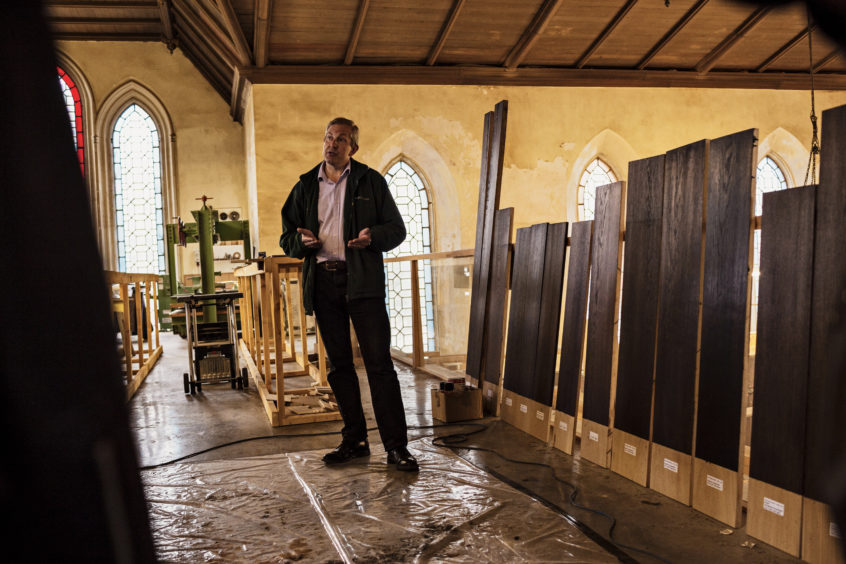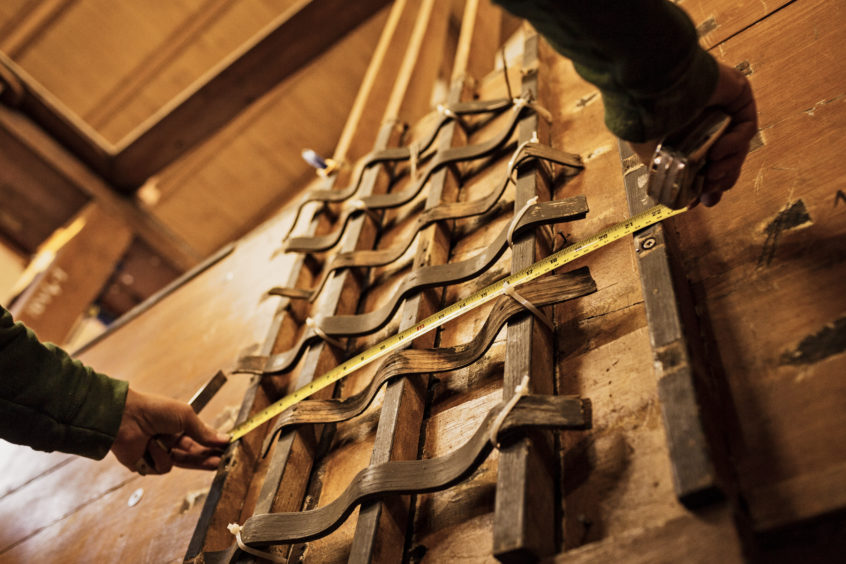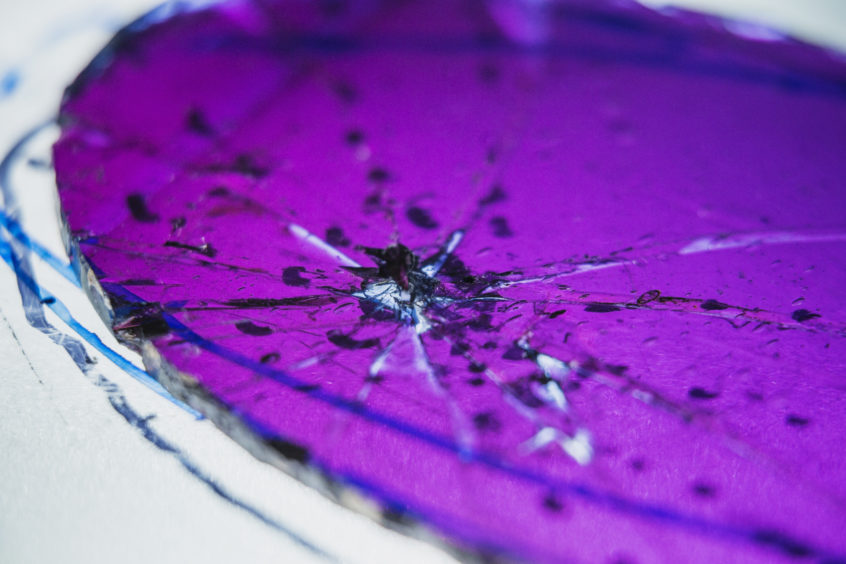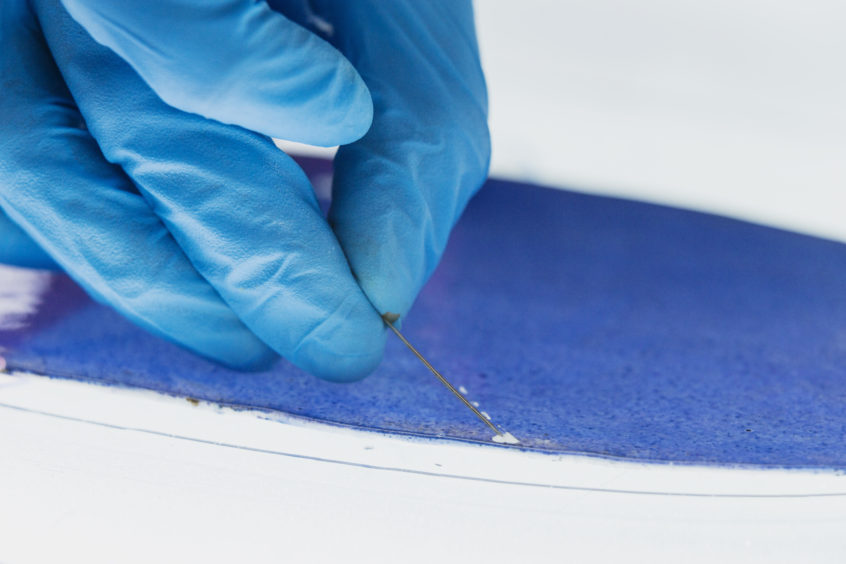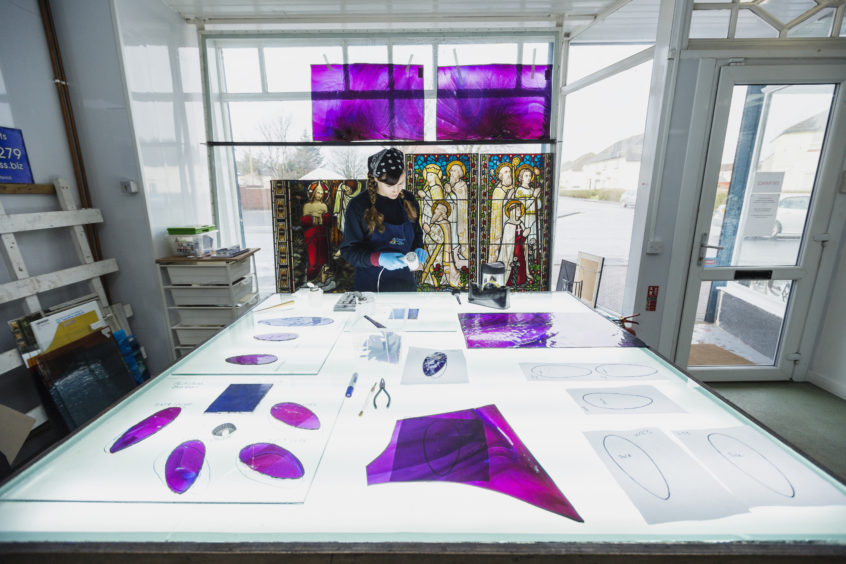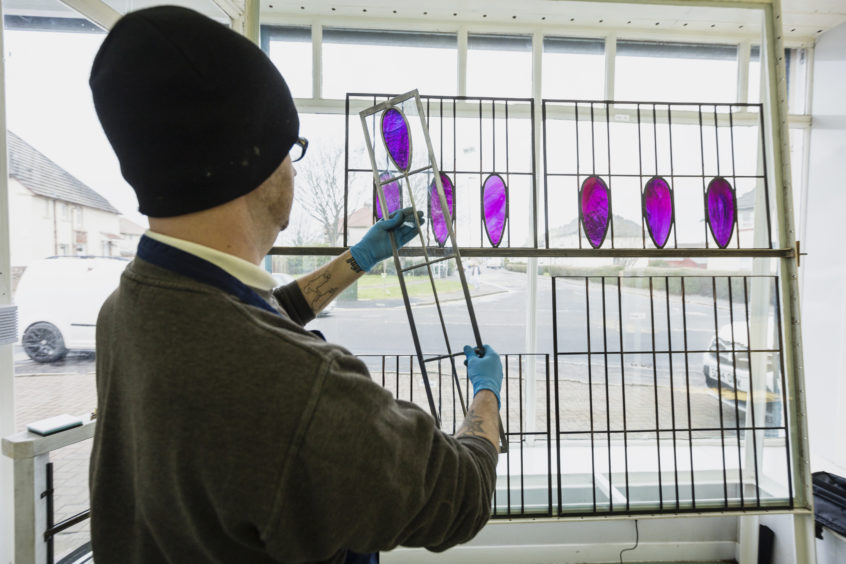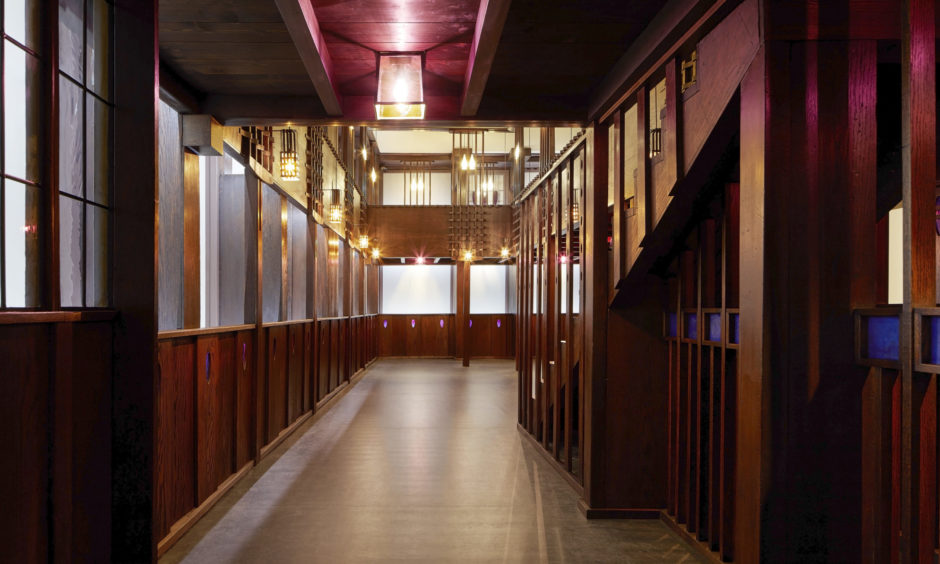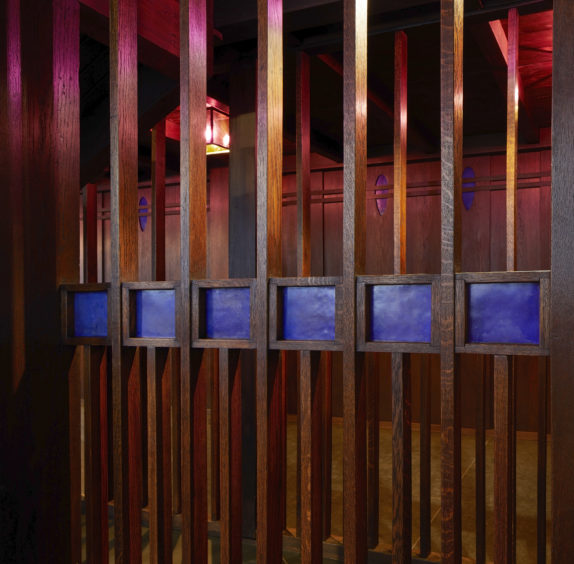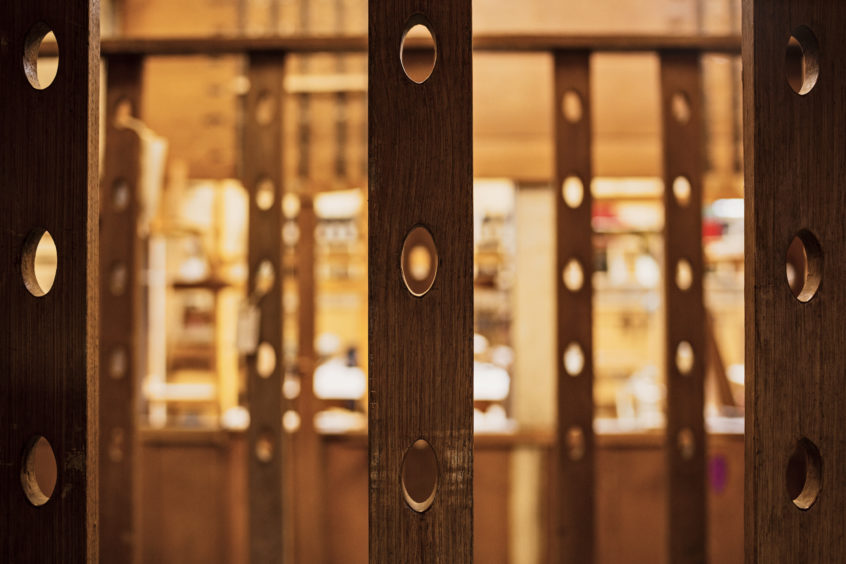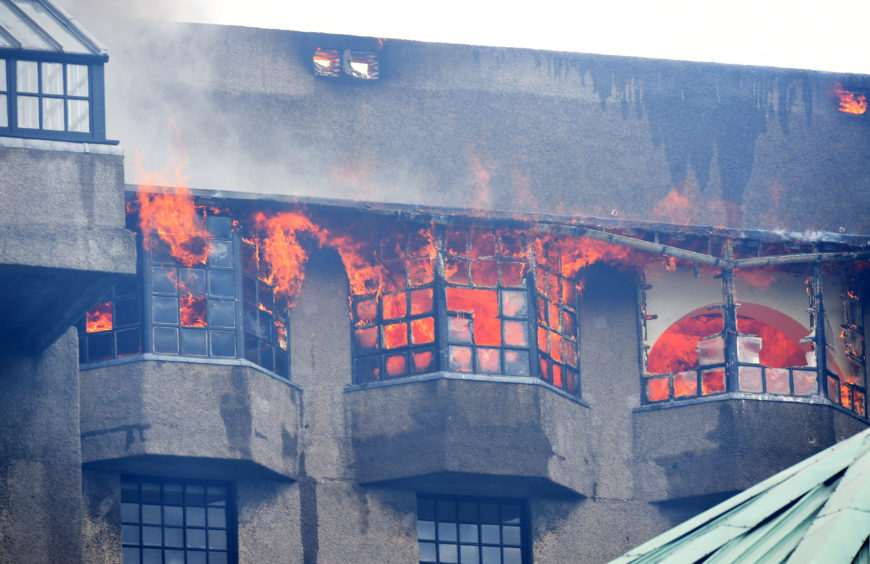As we approach the 152nd anniversary of Charles Rennie Mackintosh’s birth, The Courier exclusively reveals a film charting the restoration of the designer and architect’s iconic Oak Room, housed within V&A Dundee.
For almost 50 years, it was a forgotten, sleeping giant, hidden away in a city council store.
Saved from demolition in 1971, the Oak Room interiors – designed for Miss Cranston’s Ingram Street Tearooms in Glasgow in 1907 – show architect Charles Rennie Mackintosh at the height of his success.
The timber-lined room was dismantled and its 800 wooden components were carefully packed away in the council’s stores for half a century.
It lay there, untouched, until an extensive research project was launched to bring the Oak Room back to life.
In September 2018, the beautifully restored Oak Room went on permanent display at V&A Dundee, forming the jewel in the crown for the museum’s Scottish Design Galleries.
To many, the Oak Room is Mackintosh’s lost masterpiece and visitors flock in their millions to see it on display in Dundee.
Now a new film charting the painstaking conservation project can be exclusively revealed by The Courier ahead of the 152nd anniversary of Mackintosh’s birth on June 7.
Here it is…
Tearoom
The Oak Room is one of a number of tearooms that Mackintosh designed for Miss Catherine Cranston, who was a tearoom entrepreneur in Glasgow at the beginning of the 20th century.
It was the largest Mackintosh interior for Miss Cranston’s Ingram Street Tearooms.
The 13.5m long, double-height room, designed by Mackintosh in 1907 and completed in 1908, is recognised as one of his key works, informing his design ideas for the Glasgow School of Art Library, which was completed a year later in 1909.
The Oak Room was last used as a tearoom in the early 1950s.
When the tearooms were removed from their original Ingram Street premises in the 1970s, each room was numbered, each wall given a reference, and each piece of panelling coded.
Plans and elevations of the rooms were drawn to show how everything fitted together.
Between 2004 and 2005, Glasgow Museums quantified and documented all surviving Oak Room panelling.
This earlier developmental stage, funded by the Scottish Government, helped inform the work to recreate the interior, lost to public view for generations.
Hidden under layers of paint
Saved from demolition to make way for a hotel in 1971, the original rooms had already been hidden under layers of paint in the 1950s. The panelling was also horribly damaged.
A team led by Alison Brown, a curator at Glasgow Museums, began identifying and logging each element, conducting condition surveys, and exploring the potential for the Oak Room to be able to become an exhibit.
The conservation journey began in a former church in Dalkeith, Midlothian – Charles Taylor’s wood workshop.
Progressively, the Oak Room was taken apart and following analysis, the careful removal of paint could begin.
The first step was to take around 850 pieces and form a massive 3D jigsaw puzzle.
The original marks, scratches and patination were revealed, as well as damage made by electricians and rats.
“There had clearly been a big spring clean and they decided to brighten up the room, which was covered in a bright grain finish,” said Charles.
“That in itself was an asset, because it provided all the marks to position the pieces back to precisely where they were.”
A eureka moment came when, hidden under a single light switch, the original oiled wood finish was discovered which, following chemical analysis, was replicated.
Charles, who worked on the project for five years, said: “It was a fantastic privilege being in a Mackintosh interior for so long.
“It’s a very wonderful interior with sophisticated use of space, light and shadow. The whole Oak Room is a theatre set – a foil for the lighting scheme.
“Seeing the brilliance of the Mackintosh vision emerge from a stacks of planks of dirty damaged painted wood was so exciting.”
“Like a phoenix rising from the ashes”
Also discovered beneath the layers of paint was the distinctive pink glass Mackintosh had used.
The glass and lighting was where the expertise of Moira Malcolm of Rainbow Glass came in.
Luckily, of the three different types of glass-light fittings used there were surviving examples of each.
The first job was to make replacement lights for those lost, and they commissioned specialist glass blowers in Germany to recreate one of the two types of glass used in the scheme – a gold, pink and purple streaky glass.
The original leaded glass windows which would have glazed the building were gone, but Moira did have photographs of the room.
“As the blue enamel opaque glass does not need natural light, we deduced it was the pink, purple streaky glass that was used on the windows,” she said.
“A century ago it would have been the most opulent colour so only small amounts were used – they’re like velvety purple jewels in the dark oak.
“The dark finish of the wood contrasts with the rich gold pink glass and the deep blue of the teardrops.
“It was satisfying to see it from start to finish like a phoenix rising from the ashes.”
The conservation journey was long and painstaking, involving a small team of experts, but at long last, the tearoom was awoken from its slumber.
Now the centrepiece at V&A Dundee’s Scottish Design Galleries, it brings joy to visitors from across the globe.
Powerful experience
The theatrical art nouveau masterpiece features some of Mackintosh’s finest details, such as slender wooden columns, a delicate balcony and pink glass lampshades.
Meredith More, the curator at V&A Dundee, loves the “sense of discovery” as she walks through the Oak Room – “especially the dramatic opening up of the room as you pass by the staircase to enter the double-height space, which is flooded with light”.
“The tall wooden structures in this space look like trees stretching up to the ceiling, and as the hanging lights and coloured glass details glint in your eyeline, you almost feel like you’re in a wooded clearing,” she said.
“The Oak Room really demonstrates Mackintosh’s admiration for the natural world, and his skill in interpreting it in architectural form.”
Meredith said it feels “right” to ave this Mackintosh masterpiece, which has been unseen for decades, at the heart of the Scottish Design Gallery at V&A Dundee.
“This is not an architectural drawing or a reconstruction; this is a rare chance to step into an original room, to see for yourself the way all his carefully planned details work together to create the overall effect,” she said.
“When it’s quiet in the room I like to imagine it filled with the hustle and bustle of customers, with Catherine Cranston looking down over the balcony, checking everyone is taken care of.”
Public response
Interestingly, when many people first enter the Oak Room, they think it might be a ship’s interior, said Meredith.
“It must be all the wooden panelling! But for visitors familiar with Mackintosh’s work, it can bring back strong memories of the library at Glasgow School of Art, now sadly destroyed, but which was designed and built around the same time as the Oak Room.
“The two interiors share many similarities, such as the rich colour of the oak panelling and the clusters of hanging lights.”
Exclusive film
The film reveals the fascinating conservation and restoration process that made it possible for the Oak Room to be displayed at V&A Dundee.
“Curators, conservators and other specialists worked together to interpret the surviving documentation, examine hundreds of bits of panelling and other fittings, and decide how to piece all this back together in a way that would best reflect Mackintosh’s original intentions,” said Meredith.
“The film reflects that this was a real collaborative effort, requiring the skills and expertise of many different people.”
Rennie Mackintosh
Charles Rennie Mackintosh is one of Scotland’s most celebrated architects, artists and designers.
Mackintosh produced interiors, furniture, and posters with visionary style during the city’s arts and crafts heyday of the late 19th and early 20th centuries.
He is known globally as the leading exponent of the “Glasgow style” – the only response from Britain to the more fluid and florid international art nouveau style, but pared down and imbued with centuries of Scottish design heritage.
Glasgow School of Art
The Oak Room design developed the ideas that soon found fruition in Mackintosh’s masterwork – the library of Glasgow School of Art.
Tragically, the library was destroyed by fire in 2014 and a second devastating blaze in June 2018 gutted it to the extent that any restoration would involve rebuilding virtually from scratch.
Given this, and that June 7 is the 152nd anniversary of Mackintosh’s birth, the release of the film about the Oak Room’s restoration is timely.
Brad Pitt
Film star Brad Pitt is a huge Rennie Mackintosh fan, citing the Glasgow designer as the inspiration behind his first furniture collection when he launched it in 2012.
Following the fire that raged through the Mackintosh building at Glasgow School of Art in May 2014, Pitt agreed to be a trustee of the Mackintosh appeal.
Pitt had previously visited the building in 1994 when he was filming the movie Interview with a Vampire in London.
Speaking about the recurring theme in his table designs which focused on one continuous line of structure, Pitt said: “It started with my introduction to Mackintosh’s Glasgow rose, which is drawn with one continuous line.
“But for me there is something more grand at play, as if you could tell the story of one’s life with a single line.”
* Charles Rennie Mackintosh’s Oak Room at V&A Dundee is free for all visitors – when it opens after lockdown.
